Hanoi Train Street Guide: History, Safety & Travel Tips
Hanoi Train Street is one of the most extraordinary hidden corners of Vietnam’s capital. Nestled within the bustling Hanoi Old Quarter, this narrow railway lane has fascinated travelers with its unusual mix of local life and modern tourism
Imagine sipping a cup of Vietnamese coffee while a train rumbles past you, just inches away. This unbelievable experience has turned Hanoi Train Street into one of the most Instagrammable landmarks in Vietnam. Whether you’re a photographer, a culture lover, or just a curious explorer, visiting this railway street is an absolute must.
In this detailed guide, you will discover everything about the place: its history, how it became famous, the best time to visit, safety tips, photography advice, nearby attractions, and how to enjoy the journey with a reliable operator like Indochina Today Travel.
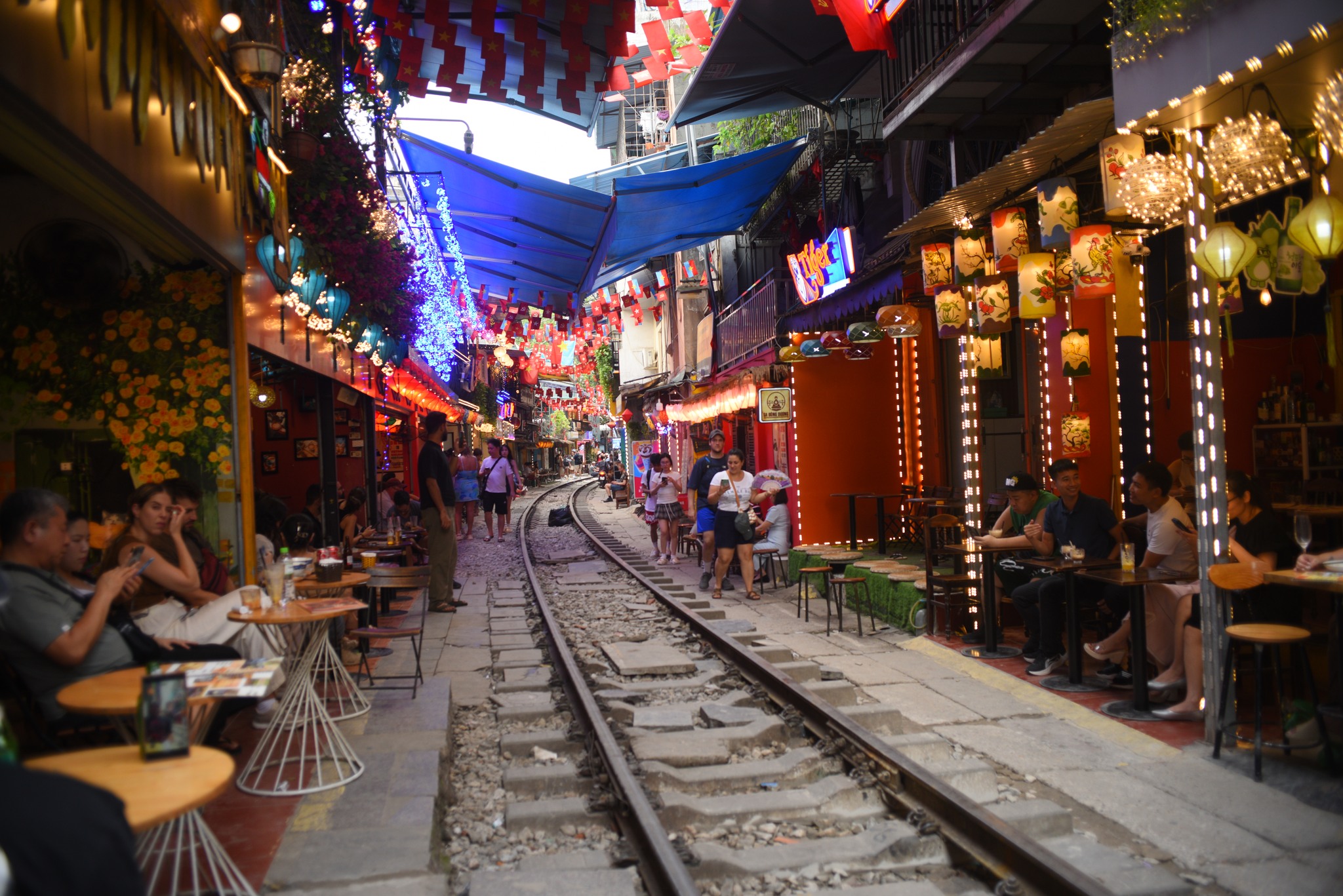
History and Background of Hanoi Train Street
The origins of Hanoi railway street date back to the early 20th century, during the French colonial period, when Vietnam’s railway system was first built. The line connects Hanoi with the north and south of the country, serving both passengers and cargo
As the city expanded, families built houses and shops close to the railway. Over time, the daily life of local residents blended with the rhythm of the train schedule. What used to be a simple transportation route has now become a global curiosity.
Locals adapted by transforming their front doors into small cafés and eateries. They know exactly when to move their chairs, pull in laundry, or clear the street before the train passes. This extraordinary lifestyle has turned Hanoi Train Street into not only a travel attraction but also a living cultural heritage.
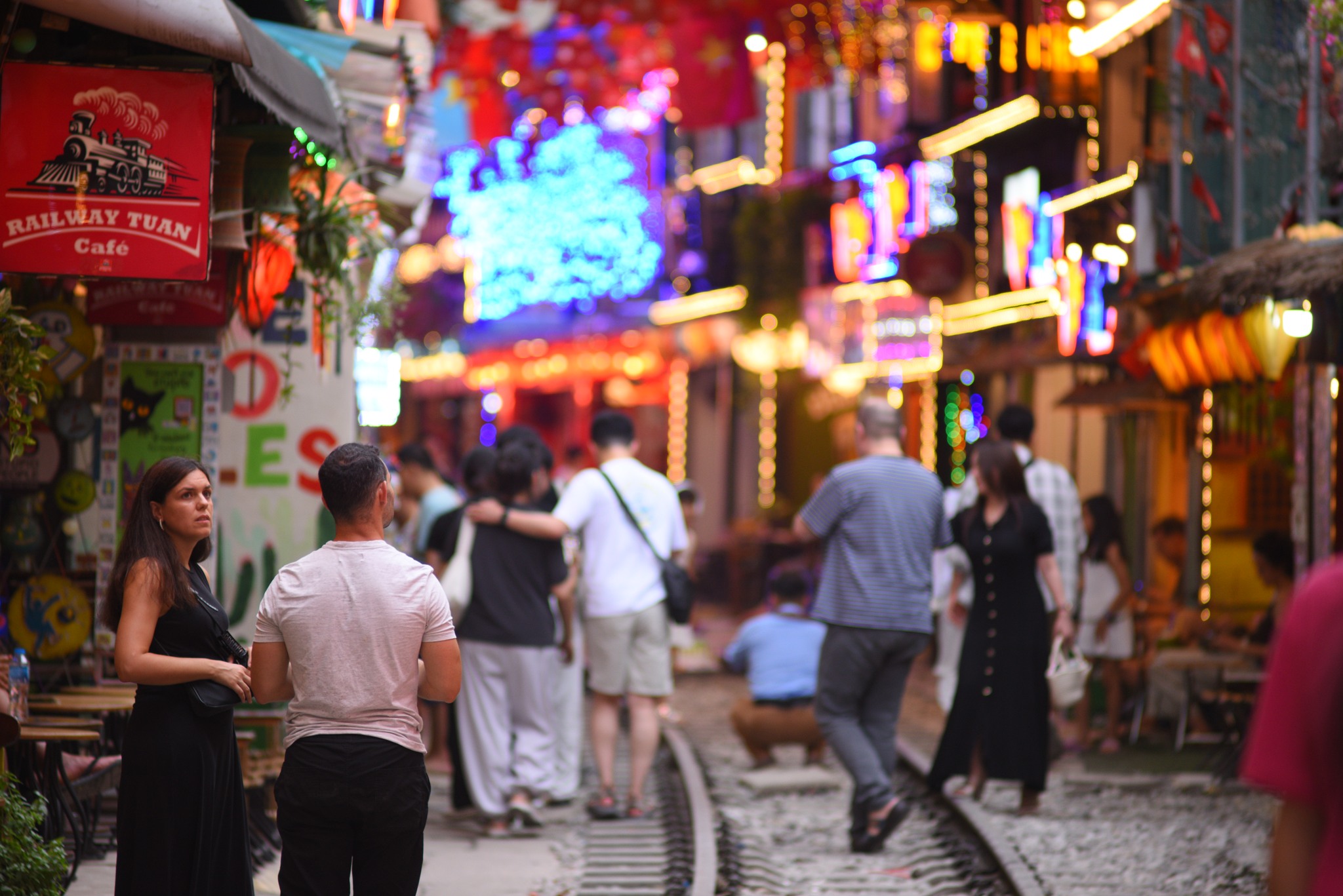
Why Hanoi Train Street Became Famous
The street’s global fame can be credited to social media. Photos and videos of tourists drinking coffee while trains squeeze through the alley went viral, making train street Hanoi a bucket-list experience for travelers worldwide
Influencers, bloggers, and journalists shared stories, making the location a symbol of Hanoi’s charm — where old traditions coexist with modern tourism. It is one of the most photographed and filmed places in the city, showing a raw yet beautiful slice of daily Vietnamese life.
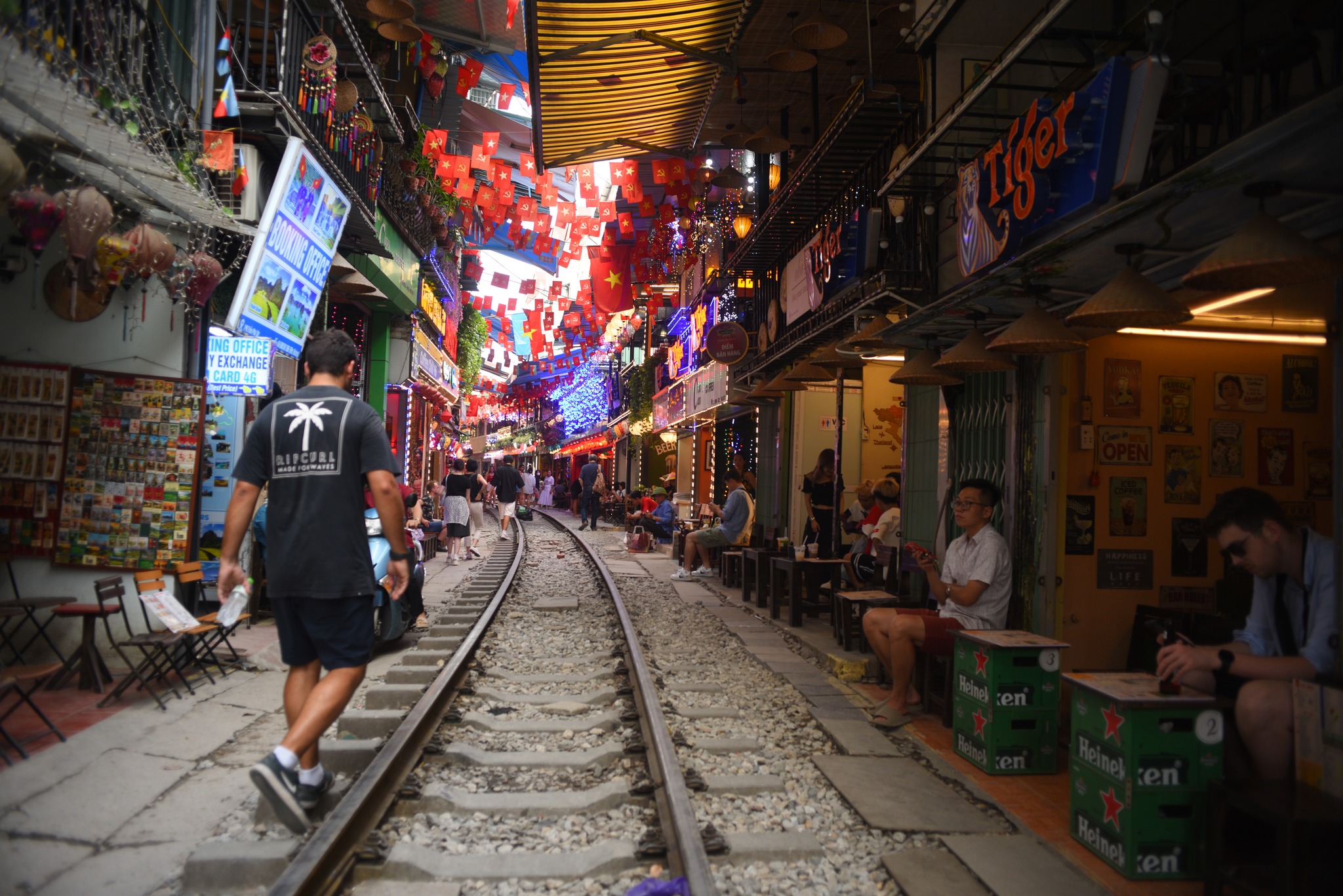
How to Get to Hanoi Train Street
Finding Hanoi Train Street is simple, especially if you are staying in the Old Quarter.
On foot: Just a 10–15 minute walk from Hoan Kiem Lake.
By taxi or motorbike: Grab and local taxis are cheap and convenient.
With a guided tour: Booking with Indochina Today Travel ensures you discover the best cafés, safest viewpoints, and insider stories.
Main entrances are located near Tran Phu Street and Phung Hung Street, so it’s easy to combine with other attractions in the Old Quarter.
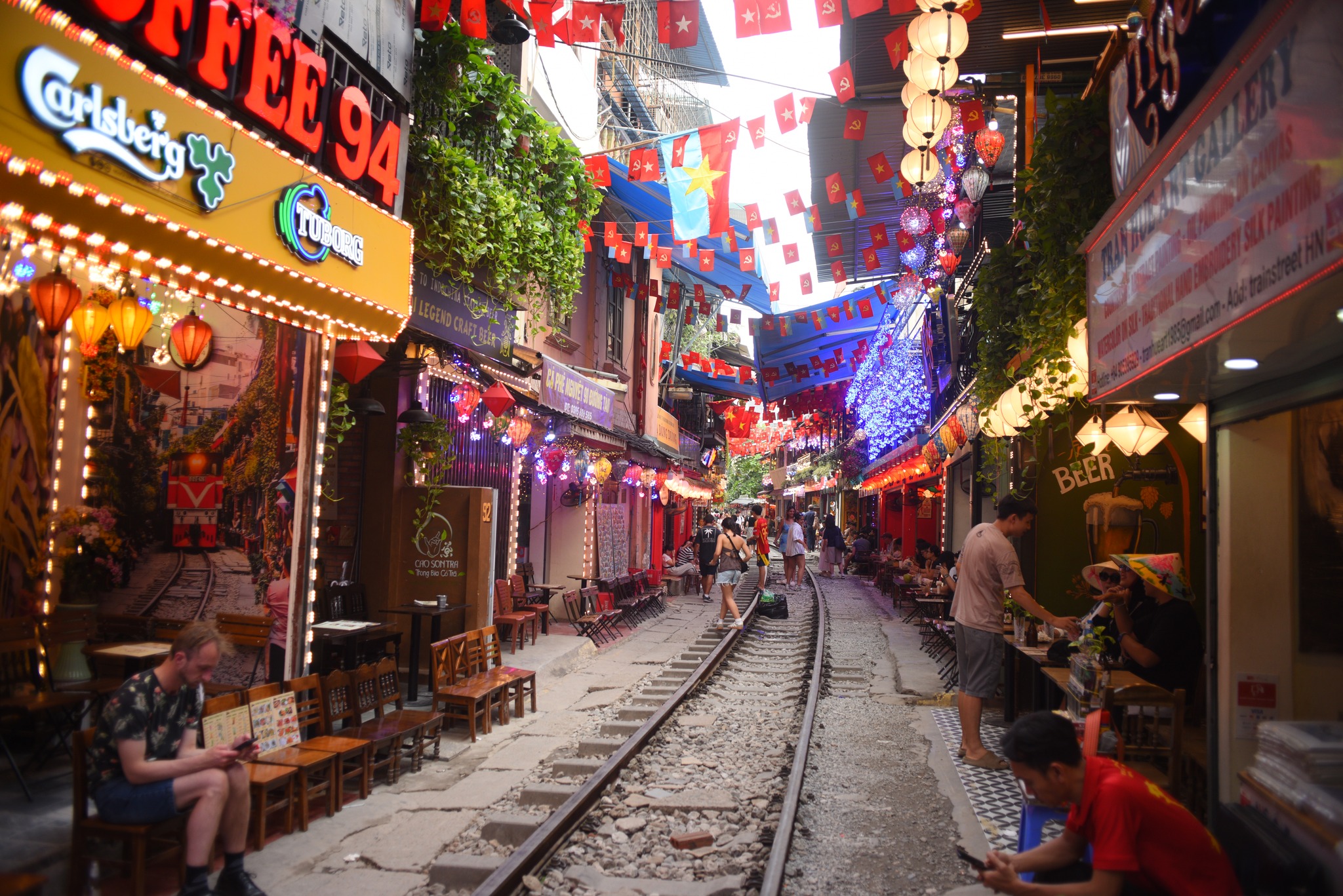
Best Time to Visit Hanoi Train Street
Trains pass multiple times per day, but the atmosphere is best in the late afternoon and early evening. At this time, the cafés are buzzing with travelers waiting for the dramatic moment when the train approaches.
Golden hour: Perfect for photography, with warm lighting.
Morning: A quieter, more authentic vibe with fewer tourists.
Checking the latest timetable with café staff or your tour guide is highly recommended, as schedules may change.
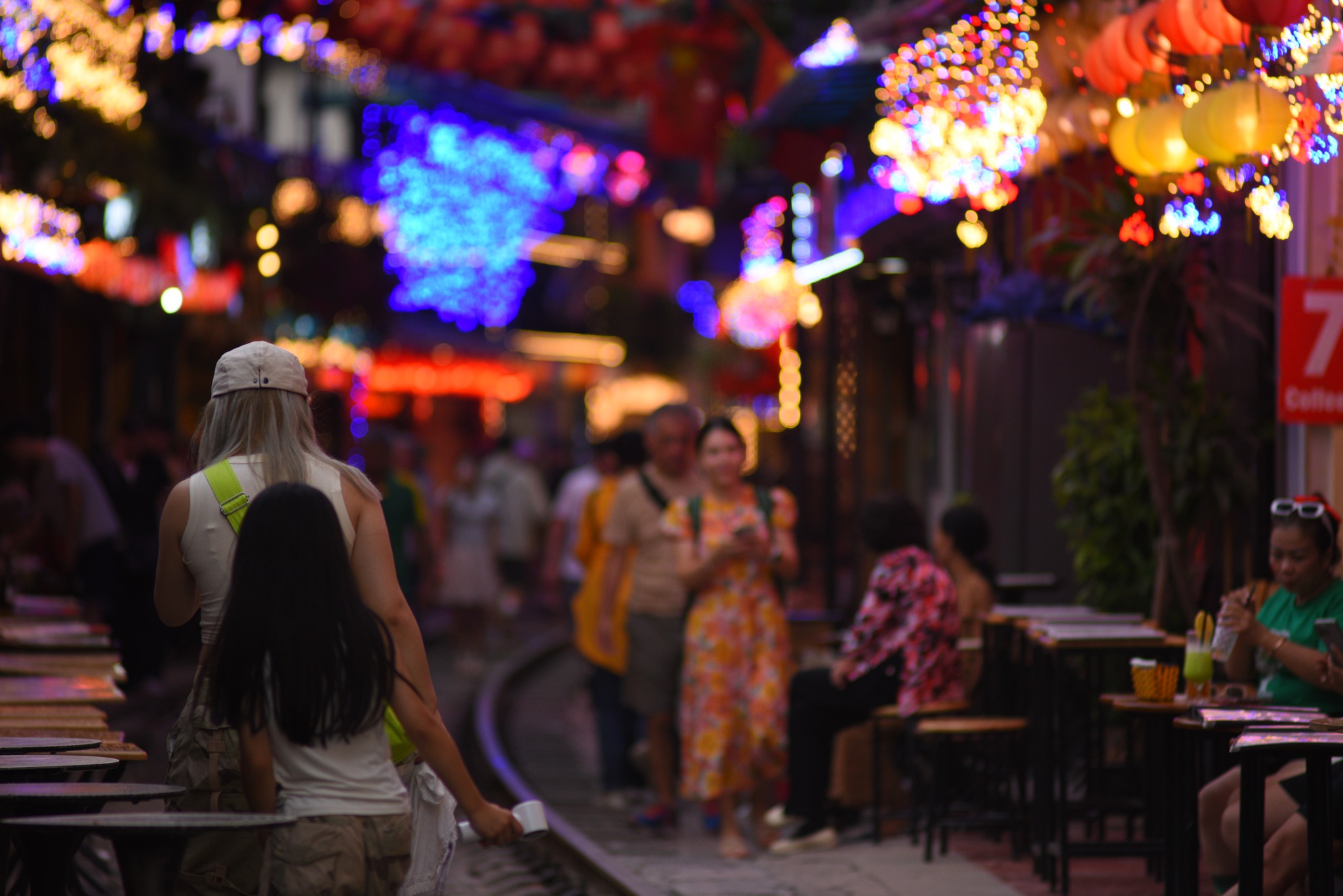
Experiencing the Cafés on Hanoi Train Street
One of the biggest highlights of visiting the Hanoi railway street is sitting in a small café, enjoying coffee while trains pass within arm’s reach
Popular Cafés Along the Tracks
Train Track Café – Famous for egg coffee and rooftop views.
Hanoi 1990s Coffee – Decorated with vintage memorabilia.
The Railway Café – Known for perfect photography angles and friendly staff.
Most cafés serve the iconic Vietnamese egg coffee, iced milk coffee, herbal tea, and light snacks — making it a cozy yet thrilling experience.
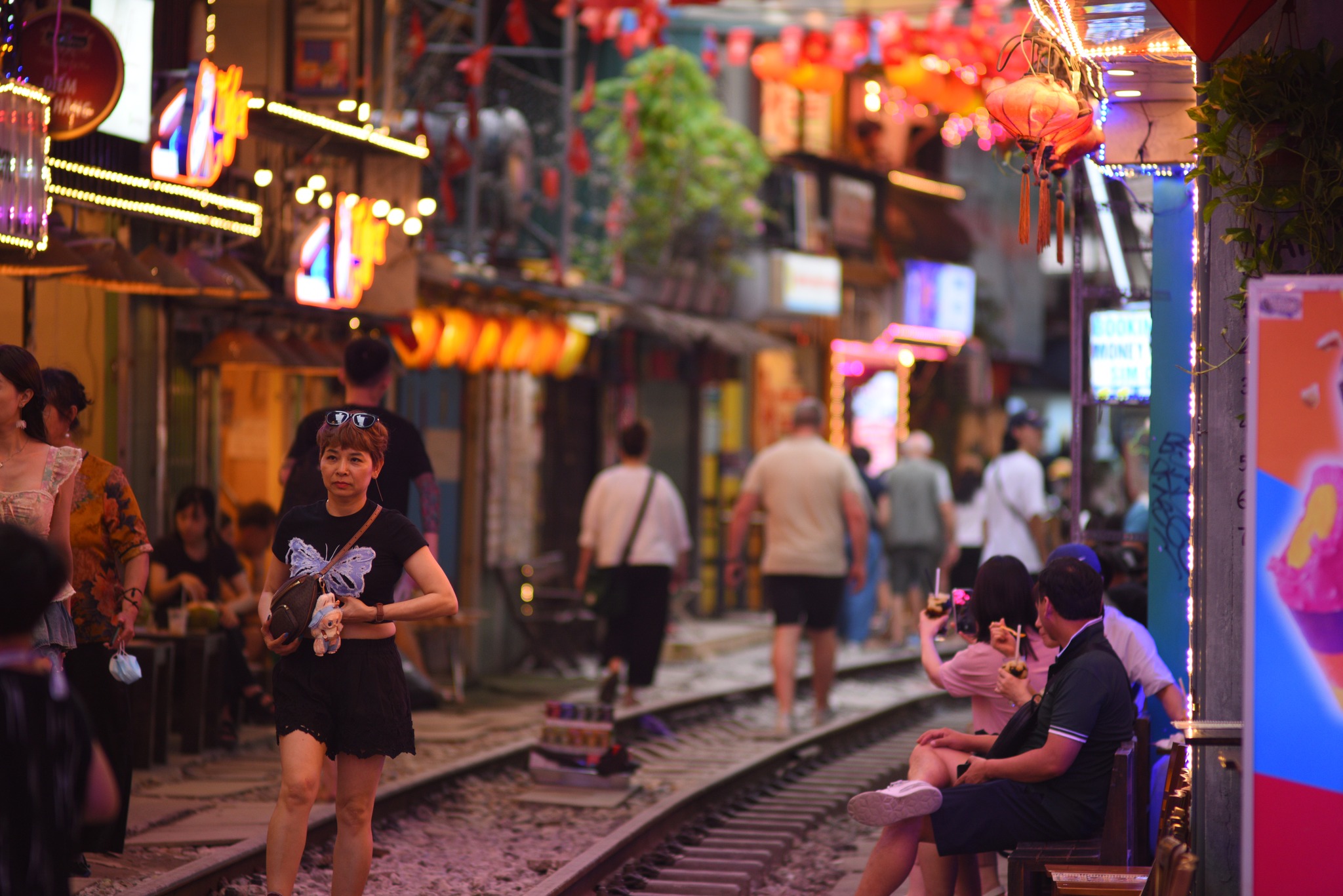
Is Hanoi Train Street Safe?
Despite appearances, train street Hanoi is relatively safe if you follow the rules. Café staff always signal when the train is coming, and locals have lived here for generations without incidents
Tips for safety:
Stay away from the tracks when the train approaches.
Listen to local instructions.
Supervise children closely.
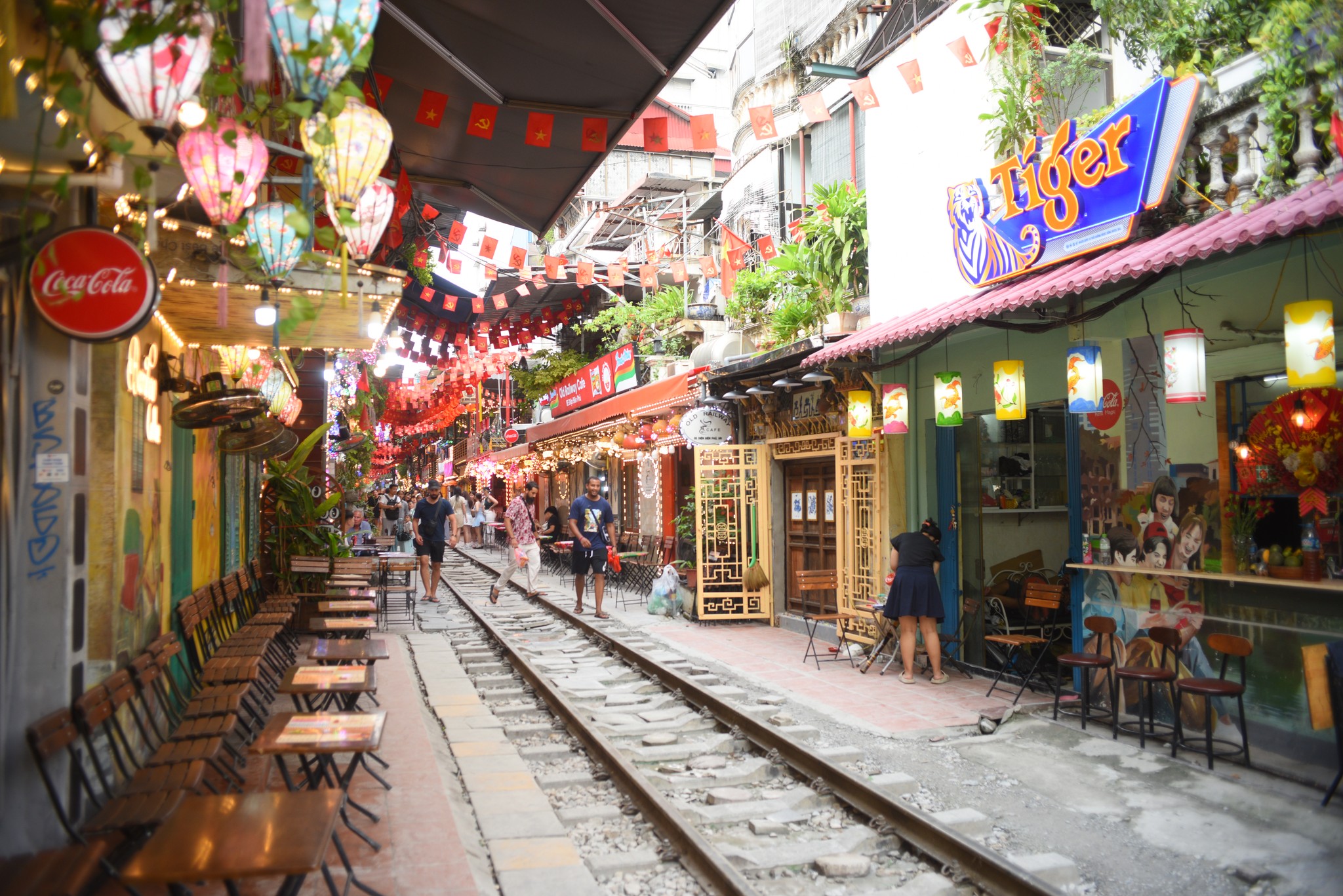
Photography Tips for Hanoi Train Street
If photography is your goal, arrive early to grab the best seat. A wide-angle lens helps capture both the train and the narrow street. For video creators, recording the sound and vibration of the train adds intensity to the memory.
Avoid using flash, as it may distract conductors. Instead, use natural light for authentic and dramatic shots.
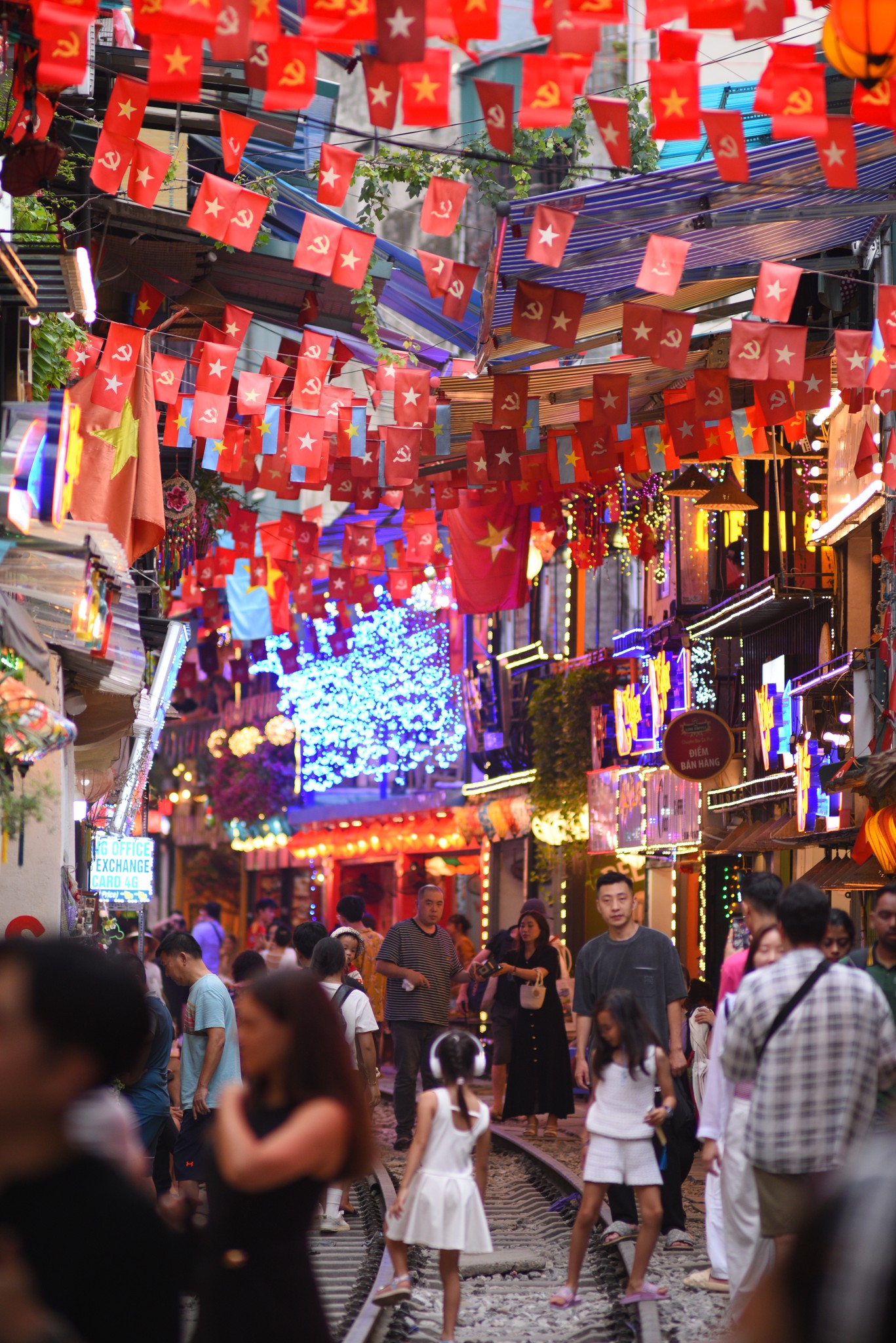
Hanoi Train Street and Local Culture
This street isn’t just about the train. It’s a window into Hanoi’s resilience and adaptability. Families prepare meals, children play, and shopkeepers run their business just steps from the railway.
Visiting here also supports the local community — every coffee or snack you buy helps families who have lived here for decades.
Nearby Attractions Around Hanoi Train Street
If you’re exploring Hanoi Train Street, don’t miss nearby landmarks:
Hoan Kiem Lake and Ngoc Son Temple – Hanoi’s spiritual heart.
St. Joseph’s Cathedral – A stunning French Gothic church.
Dong Xuan Market – The city’s largest traditional market.
Temple of Literature – Vietnam’s first university.
These sites make it easy to combine a visit to the train street with a full Old Quarter itinerary.
Booking a Guided Tour
Although you can visit independently, a guided Hanoi Train Street tour with Indochina Today Travel ensures the best insights and safe access. Tours can also be combined with:
Cycling trips in Hanoi.
Street food tours.
Day trips to Ninh Binh or cruises in Halong Bay.
FAQs About Hanoi Train Street
Is it open to visitors?
Yes, but regulations change. Booking through a trusted operator guarantees smoother access.
How often do trains pass?
Usually several times a day — mostly morning and late afternoon.
Can kids visit?
Yes, but parents must supervise closely.
Plan Your Hanoi Train Street Experience
Ready to discover the thrill of Hanoi Train Street? With its mix of culture, adventure, and stunning photography opportunities, this unique destination is a must-see in Hanoi.
Let Indochina Today Travel craft your perfect itinerary, combining the railway street with the best of Hanoi, Ninh Binh, and Halong Bay.
Contact Information
Address: Phuc Loi, Hanoi, Vietnam
Hotline / WhatsApp: +84.988.176.761
Email: sales@indochinatodaytravel.com
Website: indochinatodaytravel.com | dgbtravel.com | vietnamgolflux.com
Do not miss your chance to experience the famous Hanoi Train Street with trusted local experts. Whether you are looking for top Hanoi tours that cover the city’s hidden gems, or searching for the best Hanoi tours to combine culture, history, and street food, we’ve got you covered. Our curated selection of Hanoi tours ensures you enjoy the capital at its finest. Book your trip today and make your Hanoi adventure truly unforgettable

